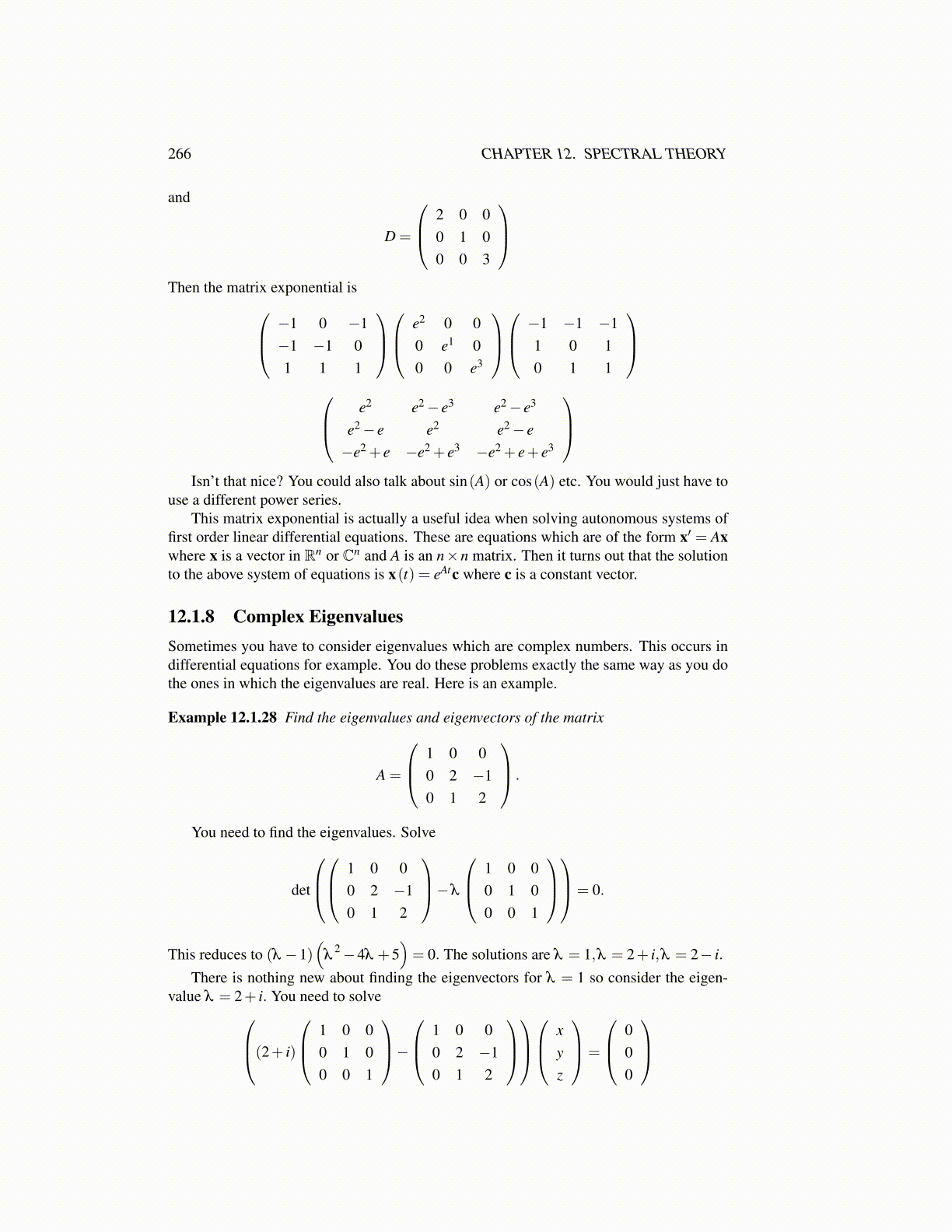
266 CHAPTER 12. SPECTRAL THEORY
and
D =
2 0 00 1 00 0 3
Then the matrix exponential is −1 0 −1
−1 −1 01 1 1
e2 0 0
0 e1 00 0 e3
−1 −1 −1
1 0 10 1 1
e2 e2− e3 e2− e3
e2− e e2 e2− e−e2 + e −e2 + e3 −e2 + e+ e3
Isn’t that nice? You could also talk about sin(A) or cos(A) etc. You would just have to
use a different power series.This matrix exponential is actually a useful idea when solving autonomous systems of
first order linear differential equations. These are equations which are of the form x′ = Axwhere x is a vector in Rn or Cn and A is an n×n matrix. Then it turns out that the solutionto the above system of equations is x(t) = eAtc where c is a constant vector.
12.1.8 Complex EigenvaluesSometimes you have to consider eigenvalues which are complex numbers. This occurs indifferential equations for example. You do these problems exactly the same way as you dothe ones in which the eigenvalues are real. Here is an example.
Example 12.1.28 Find the eigenvalues and eigenvectors of the matrix
A =
1 0 00 2 −10 1 2
.
You need to find the eigenvalues. Solve
det
1 0 0
0 2 −10 1 2
−λ
1 0 00 1 00 0 1
= 0.
This reduces to (λ −1)(
λ2−4λ +5
)= 0. The solutions are λ = 1,λ = 2+ i,λ = 2− i.
There is nothing new about finding the eigenvectors for λ = 1 so consider the eigen-value λ = 2+ i. You need to solve(2+ i)
1 0 00 1 00 0 1
− 1 0 0
0 2 −10 1 2
x
yz
=
000